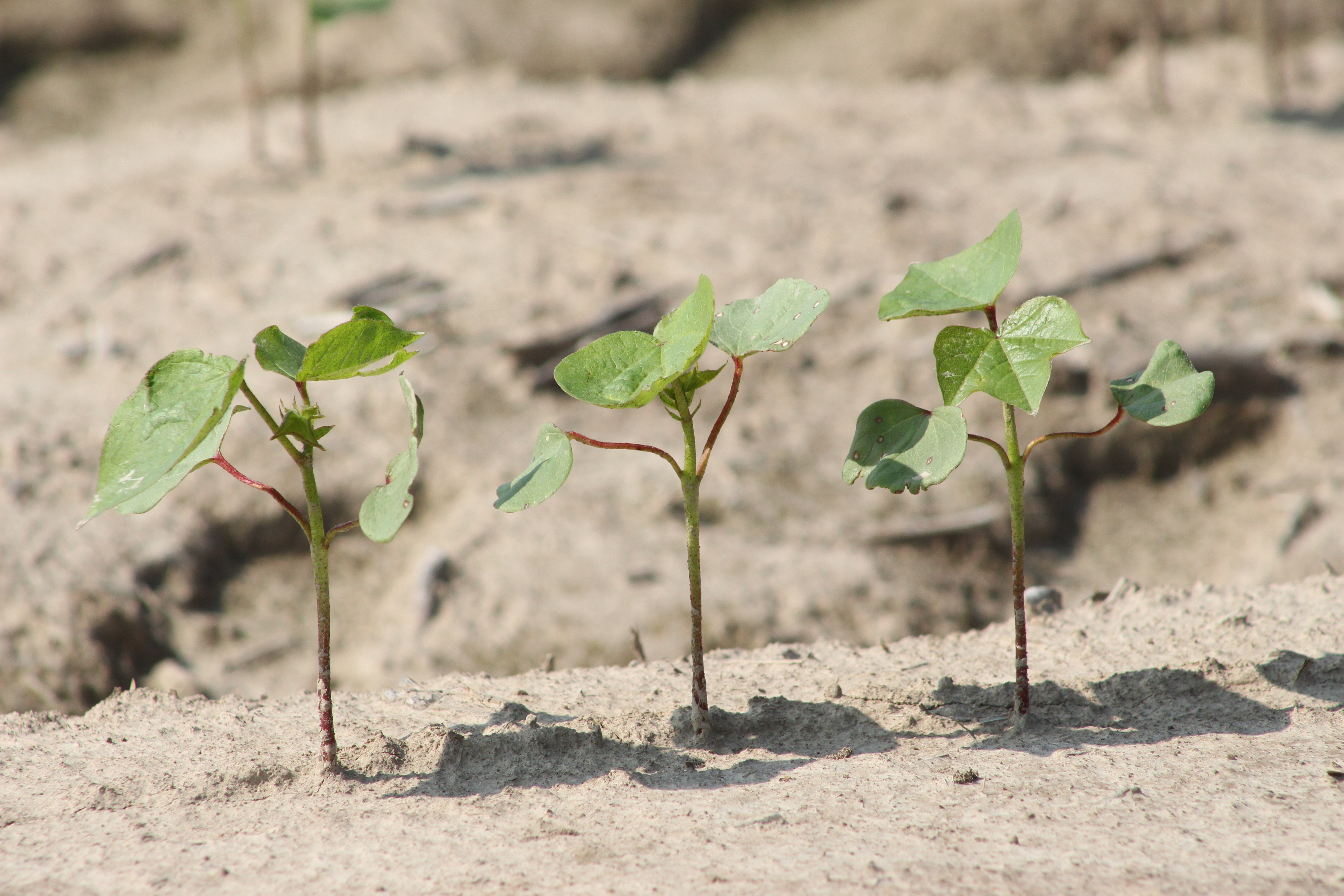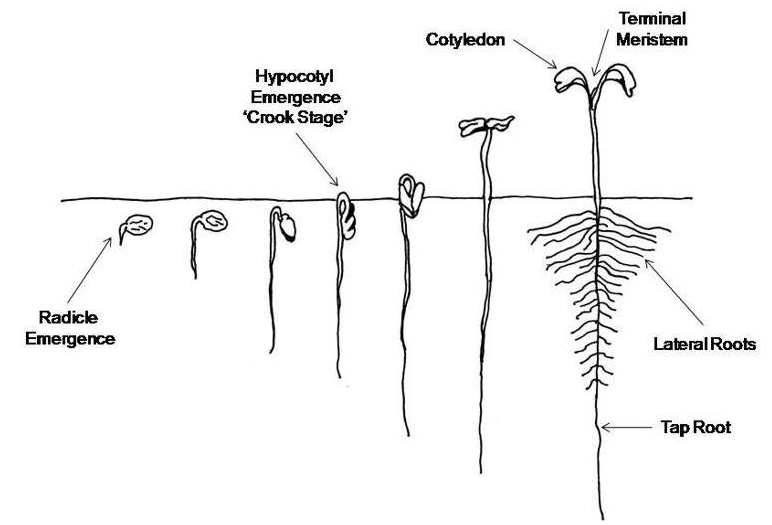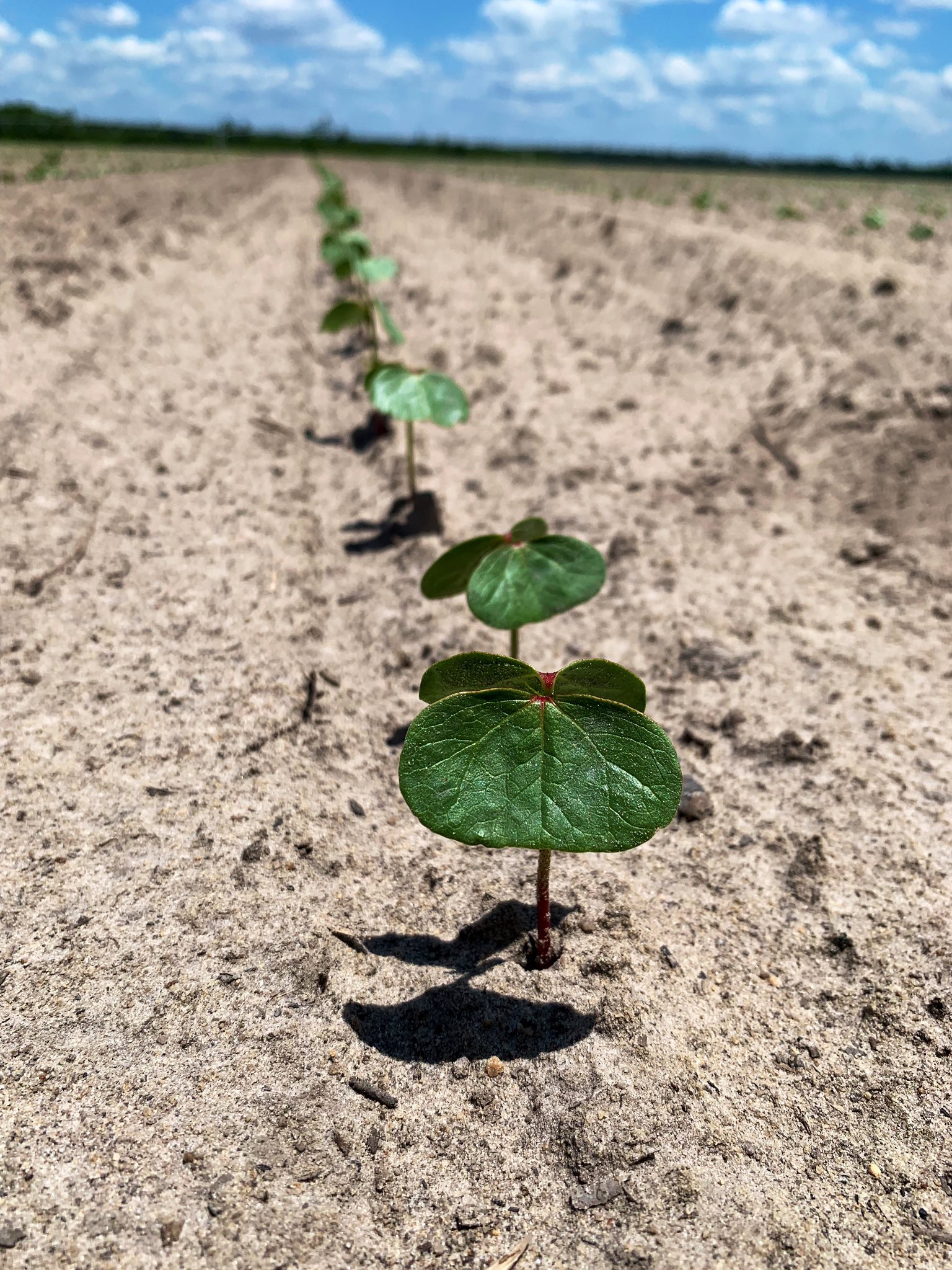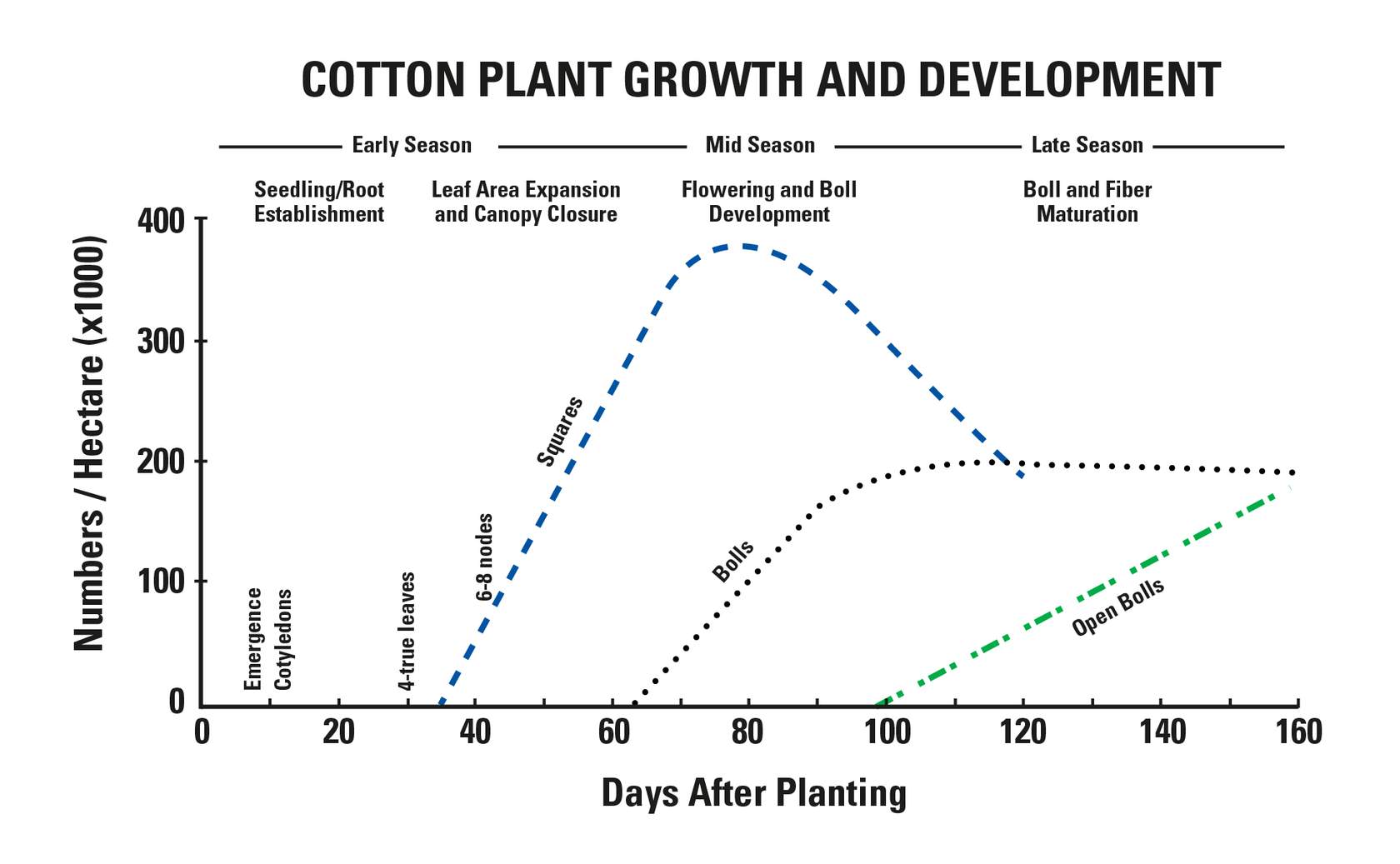Early Season Management of Cotton
PhytoGen agronomists offer information and insights about the early season management of cotton.
Early season vigor is critically important to growers. Rapid crop emergence and stand establishment is essential to a successful season. Getting the crop up, established, and mature within the heat units available in season is foundational criteria of the PhytoGen breeding program.

PhytoGen cottonseed does not waiver in its commitment to cotton. |
At PhytoGen® cottonseed our goal is to only release cottonseed varieties with excellent germination and genetically driven, strong early season vigor.
Once the seed has emerged, vigorous growth continues throughout early season. This helps the plant establish a strong root system for the rest of the year, enabling optimal uptake of nutrients and water during stressful conditions. In other words, the more vigorous a cotton seedling is early in the season, the better its odds are to maximize its yield potential.
Vigorous growth also enables cotton plants to overcome early season stress, such as thrips seedling diseases, sand blasting due to high winds and other environmental stress. The ability of PhytoGen cottonseed to germinate and grow through adverse conditions sets PhytoGen brand varieties apart from competitive varieties.
What is “good germ" and how is it calculated?

Figure 1
Cottonseed, like all seed, is a living organism. To sustain excellent germination rates, occasionally we have to make the hard decision to cut supply of a variety that does not meet those standards. We do not make the decision lightly but it is necessary as we are committed to meeting growers' expectations of quality cottonseed. Figure 1 displays several of the ways germination is measured in the lab as well as an index used to estimate germination.

Cool-Warm Vigor Index
The index is calculated by adding both tests of germination percentages together.
Warm germination % test
- Cycles daily 16 hours at 68° F, 8 hours at 86° F
- Counted after 4 days.
Cool germination % test
- At 64°
- Counted at 7 days.
Germination Success Index:
- Excellent: 160 or above
- Good: 140-159
- Fair: 120-139
- Poor: Less than 120
At PhytoGen cottonseed, large, quality seed is also a foundation of our breeding program, in addition to excellent germination. But how about the effects of the environment on germination and seedling vigor?
What Are Degree Days? When to Plant Cotton?
Even with excellent germination and early season vigor, planting cotton in optimal conditions increases the odds for rapid early season development. A standard description of cotton’s potential for growth is based on degree days over 60°, or DD60s.
The recommended base temperature for successfully planting cotton is when soil maintains 65° at a 4-inch depth at approximately 10 a.m.

The growing degree days (DD) concept is based on a developmental threshold above which the crop grows. The threshold temperature for planting cotton is a minimum 60˚F. Below that temperature, little or no development occurs. The basic formula for calculating heat units involves averaging the maximum and minimum temperatures for each day and subtracting the threshold temperature.
Avoid planting cotton if:
- Less than 25 DD60s are predicted for the five days following planting.
- It is predicted to be below 50° F for either of the next two nights following planting.
Key Temperatures for Cotton
Weather during planting season can be erratic even if soil temps are warm enough for emergence. But keep in mind the optimum temperature for growth may not be attainable in the very early planting window. Consider these temperatures before filling the planter:
- 41° - Point at which seedling death can occur during germination
- 50° - Point at which chilling injury occurs in germinating seedlings
- 86° - Optimum temperature for growth
- 60° - Lower limit at which growth ceases
- 95° - Upper limit at which growth ceases
Digging Into Accumulation of Heat Units
Cotton producers across the Belt are often anxious to plant in cool, wet conditions to lengthen the growing season and maximize yield potential. However, multiple studies show the optimum planting windows and seeding rates are well established in the literature.For local seeding rates and optimum planting windows, please refer to local and state extension.
When making replant decisions, consider the time needed for plant development. The yield potential of the current stand versus the yield potential of the replant must be estimated A uniform, lower plant population established earlier in the planting window can outperform higher plant populations planted later.
Accumulation of Heat Units |
|
Planting to seedling establishment |
50-60 heat units |
Nodes up to main stem |
45-65 heat units |
Emergence to first square |
425-475 heat units |
Square to white flower |
300-350 heat units |
Emergence to first flower |
775-850 heat units |
White flower to open boll |
850 heat units |
Planting to seeding establishment |
50-60 heat units |
Planting to harvest= 2800 heat units |
|
Late planted cotton, particularly along the northern edge of the Cotton Belt, may not receive enough heat units to fully mature.
Take a look at the chart below to see the growth trends of the cotton plant. The charts below display the importance of timely planting to meet in-season developmental milestones and the significance of achieving a uniform stand at the intended seeding rates.


Remember:
Planting cotton in optimal conditions
increases the odds of reaching the crop’s maximum yield potential.
Model generated from five populations across seven planting dates in Mississippi, Missouri, and Tennessee. Resource: Making the Replant Decision: Predicting Yield and Fiber Quality in the Mid-South from Planting Date and Population by Shawn A. Butler, Tyson B. Raper*, Michael J. Buschermohle, M. Angela McClure, Darrin M. Dodds, and Andrea Jones
Figure 1. Main, C.L. 2012. W287 Cotton Growth and Development. UT Extension Publications. Fig. 1 pg. 3.